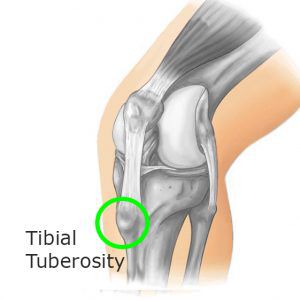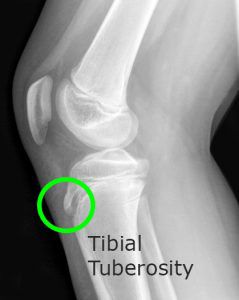Osgood Schlatter Disease
(Knee Pain)
What is Osgood Schlatter disease?
 Osgood-Schlatter disease is a condition that most often affects young athletes that practice sports that involve running, jumping and quick changes of direction, such as football players, basketball players or gymnasts.
Osgood-Schlatter disease is a condition that most often affects young athletes that practice sports that involve running, jumping and quick changes of direction, such as football players, basketball players or gymnasts.
It results from an inflammation at the patellar tendon insertion on the anterior tibial tuberosity.
It is a common cause of knee pain in growing children and adolescents.
It belongs to the family of osteochondrosis, like Sinding Larsen Johansson syndrome, Legg-Calve-Perthes disease
and Kohler disease.
Osgood-Schlatter disease causes

The continuous traction of the patellar tendon traction on the growth plate causes an inflammation that may fragment the growing bone
Pain may occur:
- with the extension of the knee
- with palpation of the tibial anterior tuberosity
Physical activities may exacerbate pain but they don’t influence the final recover.
How is Osgood-Schlatter disease diagnosed?
The doctor will conduct an examination of the knee to determine the cause of pain.
The presence of swelling at the tibial tubercle, just below the kneecap, may confirm the disease.
With an X-ray image it is possible to detect also a fragmentation at the tibial tuberosity.
Osgood Schlatter disease treatment
Treatment is always conservative. Parents must be reassured about the benignity of the disease that is self-limiting and tends to disappear towards the end of the growth.
Typical treatments are:
- limit or rest from activity
- Stretching exercises
- Ice and anti-inflammatory medication
Osgood Schlatter disease surgery
Surgery is very rare and may be necessary to remove a bony overgrowth that it may occur in children’s body.
